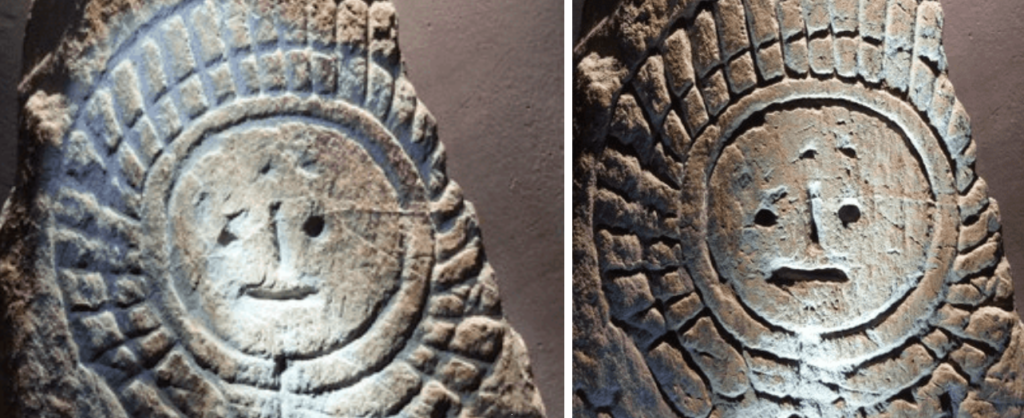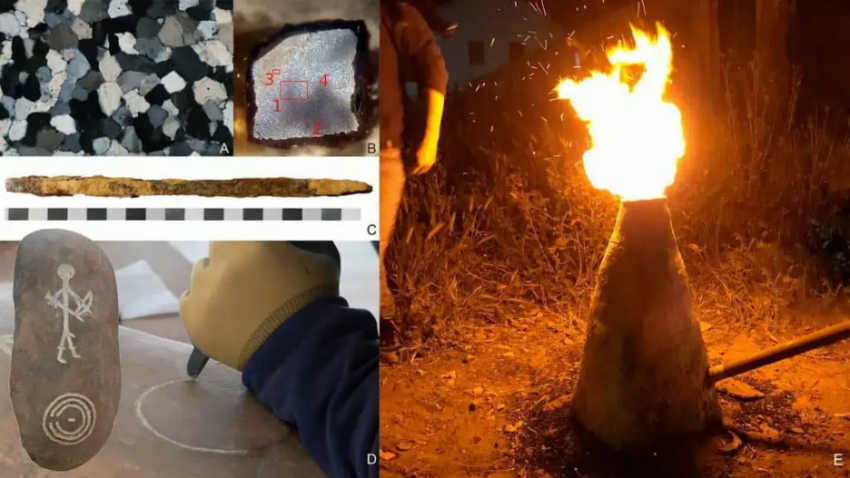It was believed that steel tools only became widespread in Europe during the Roman Empire, but a new study challenges this assumption. The study shows that steel tools were already in use in Europe around 2900 years ago, during the Late Bronze Age.
The study was conducted by an international team led by Dr. Ralph Araque Gonzalez from the Faculty of Humanities at the University of Freiburg. The researchers conducted geochemical analyses on ancient Iberian stelae (upright monuments that typically contain information in the form of text, images or a combination of the two) and found that they were made of siliceous quartz sandstone. The results immediately attracted attention.
“Just like quartzite, this is an extremely hard rock that cannot be worked with bronze or stone tools, but only with tempered steel.” Araque Gonzalez said.
To confirm their belief that these monuments were carved with steel tools, the researchers analyzed an iron chisel from the Late Bronze Age at Rocha do Vigio in Portugal. They discovered that the chisel was made of surprisingly carbon-rich steel.
The researchers also conducted an experiment in which a professional stonemason, a blacksmith and a bronze smith used chisels made of different materials to work the rock from which the stelae were made. Only the chisel made of tempered steel was able to carve the stone.



One of the stelae examined by the researchers features a human figure as the central motif. Strangely, the face depicted shows a happy expression when illuminated from above (left), but an unhappy expression when the light comes from below (right).
Important conclusions have been drawn for the archaeological evaluation of ferrous metallurgy and quartzite sculptures in other parts of the world. Until now, it was assumed that it was not possible to produce steel of appropriate quality in the Early Iron Age and certainly not in the Late Bronze Age.
The earliest known production of steel was seen in fragments of ironware from around 4000 years old, dating from around 1800 BC, excavated from Kaman-Kalehöyük in Anatolia. But iron and steel were not among the most abundant materials until around 500 BC, when most Bronze Age civilizations collapsed, paving the way for the great empires of Rome and the Han Dynasty.
The discovery of the chisel at Rocha do Vigio suggests that ferrous metallurgy, including the production and tempering of steel, were probably local developments of small decentralized communities in Iberia. Why steel production did not spread from this region of Iberia to other parts of Europe remains a mystery.
The archaeological record of Late Bronze Age Iberia is characterized by sparse settlement remains in many places and virtually undetectable burials. The stelae of western Iberia, with their depictions of anthropomorphic figures, animals and selected objects, are therefore of unique importance for the study of this period.
The discovery of the use of steel tools during this period has allowed us to take a new look at the technological advances of ancient communities and their ability to work with difficult materials.
Cover photo sources: Rafael Ferreiro Mählmann (A), Bastian Asmus (B), Ralph Araque Gonzalez (C-D-E)
